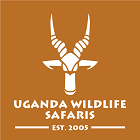Hunting Areas
1. Aswa Lolim Ranches
The former Aswa Lolim Wildlife Reserve was degazetted under Idi Amin. It covers the sub-counties of Purongo, Alero, Anaka and Koch-Goma. Although many commercial farmers have settled in this prime hunting ground, it still realistic to get Nile Buffalo, Uganda Kob, Hartebeest and Waterbuck.
Aswa Lolim lies on the eastern side of the Nile. It covers 500,000 hectares and shares 110 km direct border with Murchison Falls National Park in the south and about 78 km with the Nile in the west. The landscape is dominated by light rolling grass hills with palm trees, small valleys with creeks and light forest. Near the river you will find dense forests and large stretches of papyrus swamps.
2. Kafu River Basin
The huge Kafu River Basin stretches along Lake Kyoga, Kafu & Mayanja Rivers and covers the seven districts of Luwero, Nakaseke, Nakasongola, Kiboga, Kyankwansi, Kiryandongo and Masindi covering about 5,000,000 hectares.
The landscape in Kafu consists mainly of Papyrus swamps and dense bush thickets making it a prime hunting ground for the East African Sitatunga, East African Bush Duiker, East African Bohor Reedbuck, Nile Bushbuck, Ugandan Defassa Waterbuck, Leopard, Common Oribi and Bush Pig.
3. Ajai Wildlife Reserve
Ajai Game Reserve was named after a famous Chief called Ajai. In 1937, Chief Ajai declared the area a game sanctuary to protect “unique wild animals”, the White Rhinos (now extinct). In 1965 after the death of the Chief, the sanctuary was officially gazetted as Ajai Game Reserve. It was then under management of the former Game Department with the purpose of strengthening the protection of the White Rhinos. In the 1950’s to 1960’s Ajai was a famous tourist/sport hunters destination in the then West Nile region. Interestingly this area was also featured in the now legendary safari Roosevelt undertook during the turn of the century, Rhino camp as he named it still exists today as a settlement on the Nile.
In the late 1960s, over 100 white rhinos were translocated into Ajai Wildlife Reserve from outlying areas of West Nile, however, during the lawlessness and poor management of the 1970’s to 1980’s the Rhino population and other big game species had been greatly reduced or became extinct. In 1979 the last White Rhino disappeared from the area. UWS is currently working on on a project to return White Rhino to this historic wilderness area once again.
Uganda Wildlife Safaris have now been granted the rights to the reserve, and is in the process of implementing a management plan that will restore Ajai to its former glory. Under our management Uganda Kob, Sitatunga, Waterbuck and other species are slowly increasing and hunting is once again possible on a small scale.
According to the current management plan, the new purpose is to protect and conserve the diverse fauna and flora of Ajai, re-introduce key species and develop infrastructure to not only conserve a historical hunting area but ensure this area will benefit the people of the West Nile region, Uganda and the International community for future generations.
4. Karamoja
Our hunting area in the north east of Uganda, sharing a boundary with the famed Kidepo National Park remains as one of the last true wilderness areas in Uganda. The Karamoja region, the stomping grounds of Karamoja Bell still houses many species found nowhere else in Uganda which includes the Greater and Lesser Kudu, Brights Gazelle and Cheetah. It’s an area where you go to sleep with lions roaring deep into the night. Other carnivores here include Leopard, Spotted hyena and Black-backed and Side-striped jackals. Other large species regularly seen here are elephant, Burchell’s zebra, Bushpig, Warthog, Rothschild’s giraffe, Cape/Nile buffalo, Bushbuck, Bushduiker, Defassa waterbuck, Bohor reedbuck, Jackson’s hartebeest and oribi. Certain areas have a healthy population of Guenters, Dik dik and Chandler’s mountain reedbuck available on limited quota.
Karamoja, the land of warrior nomads stretches across an isolated corner of Africa named after the people who have there lived for centuries: the Karamojong.
With more than 27,000 square kilometres, this arid expanse of savannah and bush forms the northeast edge of Uganda where it borders Kenya and South Sudan.
Its natural borders alone attributes to the region’s remoteness. To the east stands the Rift Valley escarpment towering over the Kenyan plains and scrubland. To the north lie the pristine basin of Kidepo National Park and a mountainous vastness that leads into South Sudan. To the west lies Acholiland with its immense swamplands.
Set on a large plateau, much of Karamoja is more than 1,000 metres above sea level, and four main mountains overlook the region’s savannah, highlands and river valleys.
Karamoja’s climate is harsh. In many areas, rains seldom exceeds 800 millimetres per year, some seasons only receiving about 500 millimetres. The precipitation that does fall usually comes sporadically between June and October with the desert winds and the hot dry season taking over the land from November to March. In recent years, drought has become more frequent and severe.
5. Other Areas
There are other species including Island Sitatunga, East African Impala, East African Eland, and Topi to hunt with other safari outfitters. We can organize safaris for these species if there is a need.

